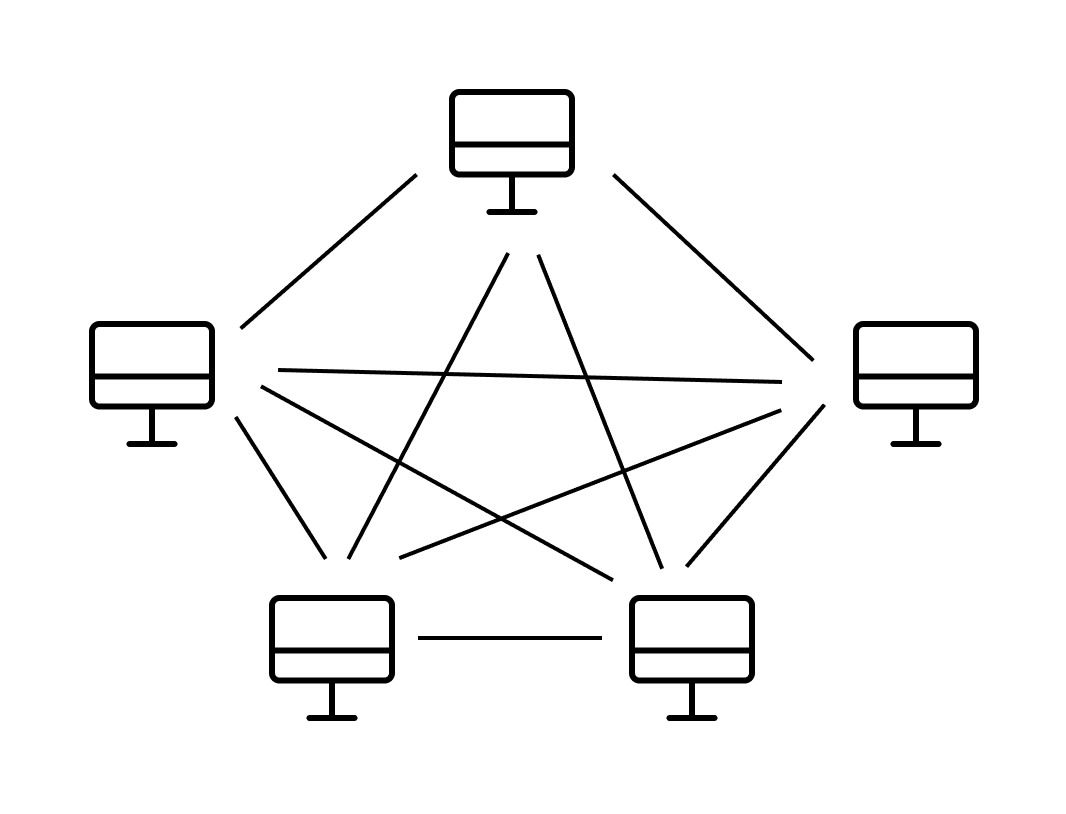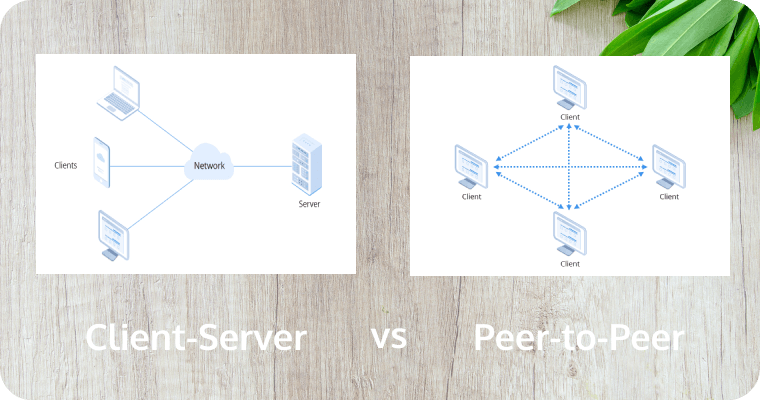Peer-to-Peer (P2P) technology represents one of the most significant architectural innovations in modern networking, fundamentally changing how we think about digital resource sharing and distribution. Unlike traditional client-server models where data flows through central servers, P2P networks create a mesh of equal participants, each simultaneously acting as both provider and consumer of resources. This revolutionary approach has transformed everything from file sharing and content delivery to real-time communication systems.
The impact of P2P architecture extends far beyond its technical elegance. By distributing network load across all participants, P2P systems achieve remarkable scalability while reducing infrastructure costs. As organizations increasingly seek efficient, resilient, and cost-effective solutions for data distribution, P2P technology has emerged as a cornerstone of modern network design, powering applications from blockchain platforms to streaming services.

What is Peer-to-Peer?
Peer-to-Peer (P2P) represents a revolutionary approach to network architecture where each participant, or peer, functions simultaneously as both client and server. Unlike traditional client-server models where communication flows through central servers, P2P networks enable direct interaction between participants, creating a decentralized network of equal nodes. This fundamental shift in network design eliminates single points of failure while maximizing resource utilization across the network.
Core Architecture Components
At its heart, a P2P network consists of interconnected nodes that form a dynamic, self-organizing network structure. Each node operates independently, capable of both requesting and providing resources without relying on central coordination. This architectural design brings several key advantages:
- Decentralized Control: No single entity manages the network, improving resilience and reducing vulnerability to failures or attacks
- Resource Sharing: Nodes contribute their computing power, storage, and bandwidth to the network
- Dynamic Scalability: The network naturally scales as new peers join, with each addition strengthening overall capacity
- Direct Communication: Peers exchange data directly, reducing latency and bandwidth bottlenecks
Network Organization
P2P networks employ sophisticated protocols and mechanisms to maintain efficient operation. Bootstrap nodes help new peers discover existing network participants, while specialized protocols manage peer discovery, connection establishment, and data transmission. This infrastructure enables:
- Efficient Resource Discovery: Peers can quickly locate desired resources across the network
- Automatic Load Balancing: Work naturally distributes across available nodes
- Fault Tolerance: The network continues functioning even if multiple nodes fail
- Optimized Data Transfer: Direct peer connections minimize transmission overhead
How Peer-to-Peer Networks Work?
P2P networks operate through a sophisticated series of processes that enable decentralized communication and resource sharing. Understanding these core mechanisms reveals how P2P systems achieve their remarkable efficiency and resilience.
1. Node Discovery and Network Formation
When a new peer joins the network, it initiates the discovery process to establish connections with existing participants. This critical first step typically employs distributed hash tables (DHT) or similar mechanisms to efficiently locate active nodes. Bootstrap servers may provide initial connection points, helping new peers integrate into the network quickly. Once connected, peers maintain dynamic routing tables to track network topology and optimize communication paths.
2. Resource Location and Request Handling
After joining the network, peers can both request and serve resources. The resource location process typically involves distributed indexing systems that help peers efficiently find desired content across the network. When a peer requests a resource, the network's routing algorithms identify optimal sources based on factors like network proximity, available bandwidth, and current load. This intelligent request routing ensures efficient resource utilization across the network.
3. Data Transfer and Communication
P2P networks implement direct data transfer between peers, eliminating the bottlenecks associated with centralized servers. This peer-to-peer communication can take several forms:
- Direct Transfer: Peers exchange data directly when network conditions permit
- Multi-hop Routing: Data travels through intermediate peers to overcome network restrictions
- Parallel Downloads: Large files can be retrieved from multiple peers simultaneously
- Chunk-based Sharing: Resources are divided into smaller pieces for efficient distribution
4. Network Maintenance and Optimization
To maintain optimal performance, P2P networks continuously monitor and adjust their operations. This includes:
- Regular peer status updates to track node availability
- Dynamic path optimization to improve transfer speeds
- Load balancing across available peers
- Automatic recovery from peer disconnections
- Security measure implementation to protect against malicious actors
What Are the Main Types of Peer-to-Peer Networks?
P2P networks employ various architectural approaches to achieve decentralized communication and resource sharing. Each type offers distinct advantages and trade-offs based on its organization and management mechanisms:
1. Centralized P2P Networks
These networks utilize central servers to coordinate peer interactions while enabling direct data transfer between nodes. Though simpler to implement and manage, they introduce potential vulnerabilities through single points of failure. The early Napster platform exemplified this approach, demonstrating both its effectiveness for file sharing and its inherent limitations.
2. Decentralized P2P Networks
Operating without central coordination, these networks rely entirely on peer-to-peer communication. The Bitcoin network stands as a prime example, showcasing how true decentralization enables robust and censorship-resistant operations. While offering superior resilience, this architecture requires more sophisticated management mechanisms.
3. Structured P2P Networks
These networks implement systematic organization through specific data structures, particularly distributed hash tables (DHT). Platforms like Chord and Pastry demonstrate how structured approaches enable efficient resource location and routing. While offering superior search capabilities, they demand more complex node management protocols.
4. Unstructured P2P Networks
Featuring random peer connections, these networks prioritize simplicity and flexibility over search efficiency. Gnutella exemplifies this approach, where nodes connect organically without predetermined structure. While easier to implement and maintain, these networks often require more network resources for peer discovery and resource location.
Peer-to-Peer vs Client-Server

Architecture Comparison
| Feature | Client-Server | Peer-to-Peer |
|---|---|---|
| Control Structure | Centralized | Decentralized |
| Resource Management | Server-based | Distributed |
| Scalability | Limited by server capacity | Scales with network size |
| Setup Cost | Higher (server infrastructure) | Lower (uses existing resources) |
| Maintenance | Simpler, centralized | More complex, distributed |
| Security Control | Centralized, easier to implement | Distributed, more challenging |
| Performance | Consistent but server-dependent | Variable based on peer availability |
| Reliability | Single point of failure risk | High fault tolerance |
The client-server architecture represents a centralized approach where dedicated servers provide resources and services to multiple clients. In this model, servers act as powerful central hubs that manage data, control access, and coordinate client activities. Clients make requests to these servers, which process the requests and return appropriate responses. This architecture excels in scenarios requiring strict control over resources, consistent performance, and centralized security management. Popular examples include web servers, email systems, and traditional database applications.
Peer-to-peer architecture takes a fundamentally different approach by eliminating the need for central servers. In this model, each network participant (peer) functions as both client and server, sharing resources directly with other peers. This decentralized structure creates a resilient network where resources are distributed across all participants. The system naturally scales as new peers join, with each addition potentially increasing the network's overall capacity. This architecture is particularly effective for file sharing, content distribution, and collaborative applications where decentralized control and resource sharing are priorities.
Real-World Applications of Peer-to-Peer Technology
P2P technology has transformed many aspects of digital communication and data sharing through its innovative decentralized approach. Let's explore the main areas where P2P networks are making a significant impact:
1. File Sharing and Content Distribution
BitTorrent and similar P2P protocols have revolutionized file sharing by enabling users to download content pieces from multiple peers simultaneously. This not only speeds up downloads but also reduces the burden on central servers, making large-scale content distribution more efficient and cost-effective.
2. Real-time Communication
P2P has changed how we communicate online by enabling direct device-to-device connections. Instead of routing all communication through central servers, modern applications use P2P technology to provide faster, more private voice and video calls, instant messaging, and collaboration tools. This direct connection approach reduces costs and improves performance.
3. Blockchain and Cryptocurrencies
Blockchain represents P2P technology at its most innovative. By creating networks where all participants maintain copies of a shared ledger, blockchain enables secure transactions without central authorities. This foundation supports not just Bitcoin and other cryptocurrencies, but also smart contracts and decentralized finance applications, creating new possibilities for digital transactions.
4. Distributed Computing
P2P networks excel at sharing computational tasks across many computers. By breaking complex problems into smaller pieces and distributing them across a network of peers, organizations can tackle challenging computational problems more efficiently. This approach powers everything from scientific research to distributed machine learning and 3D rendering projects.
Challenges and Solutions in Peer-to-Peer Networks
While P2P technology offers significant advantages in decentralization and resource sharing, it faces several key challenges. Here's an examination of the main challenges and their modern solutions:
1. Security and Privacy
The decentralized nature of P2P networks creates unique security challenges, as networks must operate without central authentication or control mechanisms. Malicious nodes can potentially infiltrate the network, leading to security breaches and privacy concerns.
Modern P2P systems address these issues through comprehensive security frameworks that combine end-to-end encryption, blockchain-based trust mechanisms, and sophisticated peer reputation systems. These solutions help create secure, trustworthy networks while maintaining decentralized operations.
2. Network Connectivity
One of the most significant technical challenges in P2P networks involves establishing reliable connections between peers, particularly when they are behind NAT devices or firewalls.
Modern P2P applications overcome these barriers through a sophisticated combination of NAT traversal techniques, including STUN for public IP discovery and TURN for relay-based communication when direct connections fail. The ICE framework further optimizes connectivity by automatically selecting the most efficient connection method.
3. Performance and Scalability
As P2P networks grow, they face increasing challenges in maintaining efficient resource discovery and data transfer. Large-scale networks can suffer from latency issues and inconsistent performance.
To address these challenges, modern P2P systems implement distributed hash tables (DHT) for efficient resource location, along with intelligent traffic management and dynamic peer selection algorithms. These technologies help maintain network performance even as the network scales to millions of nodes.
4. Regulatory Compliance
The decentralized and often anonymous nature of P2P networks creates significant challenges for regulatory compliance and content control.
Modern P2P platforms address these concerns through integrated compliance frameworks that include content verification systems and transparent usage tracking mechanisms, while still maintaining user privacy. This balanced approach helps P2P networks operate within legal frameworks while preserving their fundamental benefits.
Conclusion
As we've explored throughout this article, peer-to-peer networks have revolutionized how we think about digital communication and resource sharing. While P2P architecture provides numerous advantages in decentralization and scalability, modern applications often require more sophisticated solutions that combine the best aspects of P2P with enterprise-grade reliability and performance.
This is where Tencent Real-Time Communication (TRTC) comes in. TRTC represents the next evolution in network communication technology, building upon P2P principles while adding powerful features for today's demanding applications. As a comprehensive audio and video solution, TRTC offers several key advantages:
- Global Coverage: Leveraging Tencent's worldwide network infrastructure for consistent performance
- Low Latency: End-to-end latency under 300ms globally, with 40% packet loss resistance
- Cross-Platform Support: Seamless integration across iOS, Android, Web, Windows, and more
- High Quality: Support for HD video (up to 1080P) and professional audio processing
- Scalability: Ability to handle up to 300 users per room with 50 simultaneous cameras
- Enterprise Features: Built-in security, recording capabilities, and instant messaging integration
Ready to transform your application with professional-grade real-time communication? Start building with TRTC today and join the thousands of developers already creating innovative solutions across education, healthcare, social networking, and enterprise collaboration.


